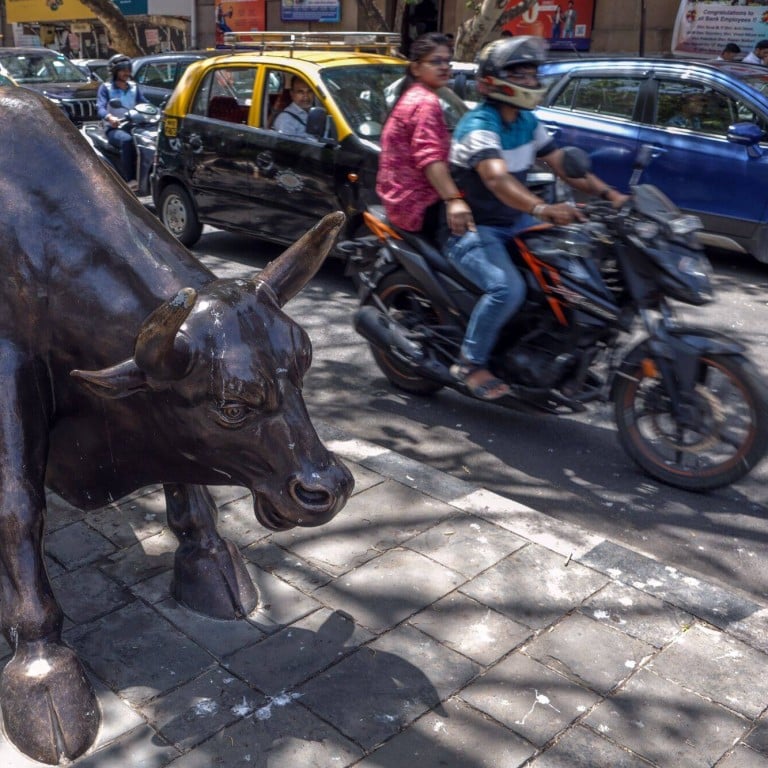
Is China’s recovery a riskier bet than India’s boom? Maybe not
- While China’s downturn tops the list of risks in developing economies, less attention is paid to the difficulties in sustaining India’s boom
- Yet India’s weaknesses, such as a low labour participation rate, a lack of jobs and a large fiscal deficit, should not be overlooked
Hardly a day goes by without comparisons being drawn between India and China. Such contrasts are invariably inapt and misleading. Not only is India’s economy one-fifth of China’s, the structure of the two economies and the nations’ development paths and political systems are vastly different.
Yet the diverging fortunes of India and China over the past several years raise important questions about the future drivers of global growth as well as the right investment strategies in emerging markets.
Nobody is suggesting India will catch up with China any time soon. However, even a cursory glance at India’s projected growth – annual economic output of more than 6 per cent for at least the next five years and a weighting in the benchmark MSCI emerging market equity index rising from the current 18 per cent to 23 per cent by 2033 – suggests it could supplant China as the largest contributor to global growth.
Global investors remain bearish on China. In Bank of America’s latest Asia fund manager survey, published on March 19, a net 18 per cent of respondents had an underweight position in Chinese stocks, the biggest net underweight stance in the Asia-Pacific region. Last year, China accounted for just one-fifth of foreign institutional investment in Asia’s equity markets excluding Japan, data from HSBC shows.

According to a report by Barclays last September, India could overtake China as the biggest contributor to global growth by the end of the decade if it is able to raise its growth rate closer to 8 per cent. A lot hinges on whether the government “can encourage more rapid growth without compromising India’s hard-won macro stability”, said Barclays.
While China’s downturn is at the top of the list of risks in developing economies, less attention is paid to the difficulties in sustaining India’s boom.
Do China’s leaders fully grasp foreigners’ concerns about the country?
Even the most prominent India bulls concede that the stakes have risen significantly in recent years. Morgan Stanley notes that “as the economy grows and investment picks up, policy support will become even more critical to expanding infrastructure, developing a skilled labour force, deepening capital markets and engaging with domestic and foreign investors”.
Just because India has a large and rapidly expanding working-age population does not mean that it will reap its much-touted demographic dividend. Worryingly, labour’s contribution to growth has fallen since the late 1990s, partly because India is not generating enough non-agricultural jobs. Moreover, sectors growing the fastest, such as finance and business process outsourcing, are not big creators of employment. Jobless growth risks undermining the investment-driven expansion India is banking on.

Furthermore, unlike China, India runs a current account deficit and a large fiscal deficit, increasing its reliance on inflows of foreign capital. JPMorgan believes India’s fiscal deficit is “overlooked” given the high rate of growth. Even if the economy powers ahead, which is likely, India’s fiscal governance will come under greater scrutiny.
In June, a portion of Indian government debt will be added to JPMorgan’s influential emerging market local currency bond indices, giving foreign investors greater exposure to India’s bond market. Index inclusion, while a victory for Indian technocrats, could lead to rapid and volatile inflows at a time when there are already concerns about financial stability and stretched valuations in the stock market.
Why India’s start-ups are finding it hard to get money despite booming economy
While China is the world’s cheapest major equity market, India is the most expensive. Although strong corporate earnings have helped deliver eight straight years of gains, a trading frenzy among inexperienced retail investors has led to regulatory clampdowns. The actions have had a chilling effect on India’s once-booming market for initial public offerings and caused a brutal sell-off in smaller stocks.
This may prove costly given China’s deep-seated problems. Yet managing and sustaining India’s boom is also fraught with risk.
Nicholas Spiro is a partner at Lauressa Advisory

